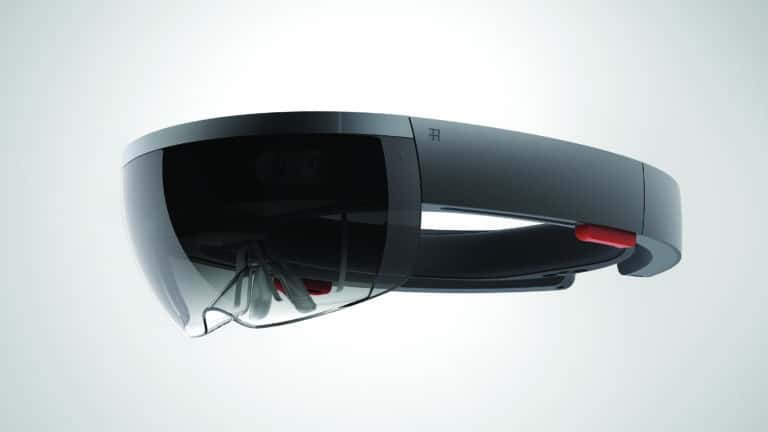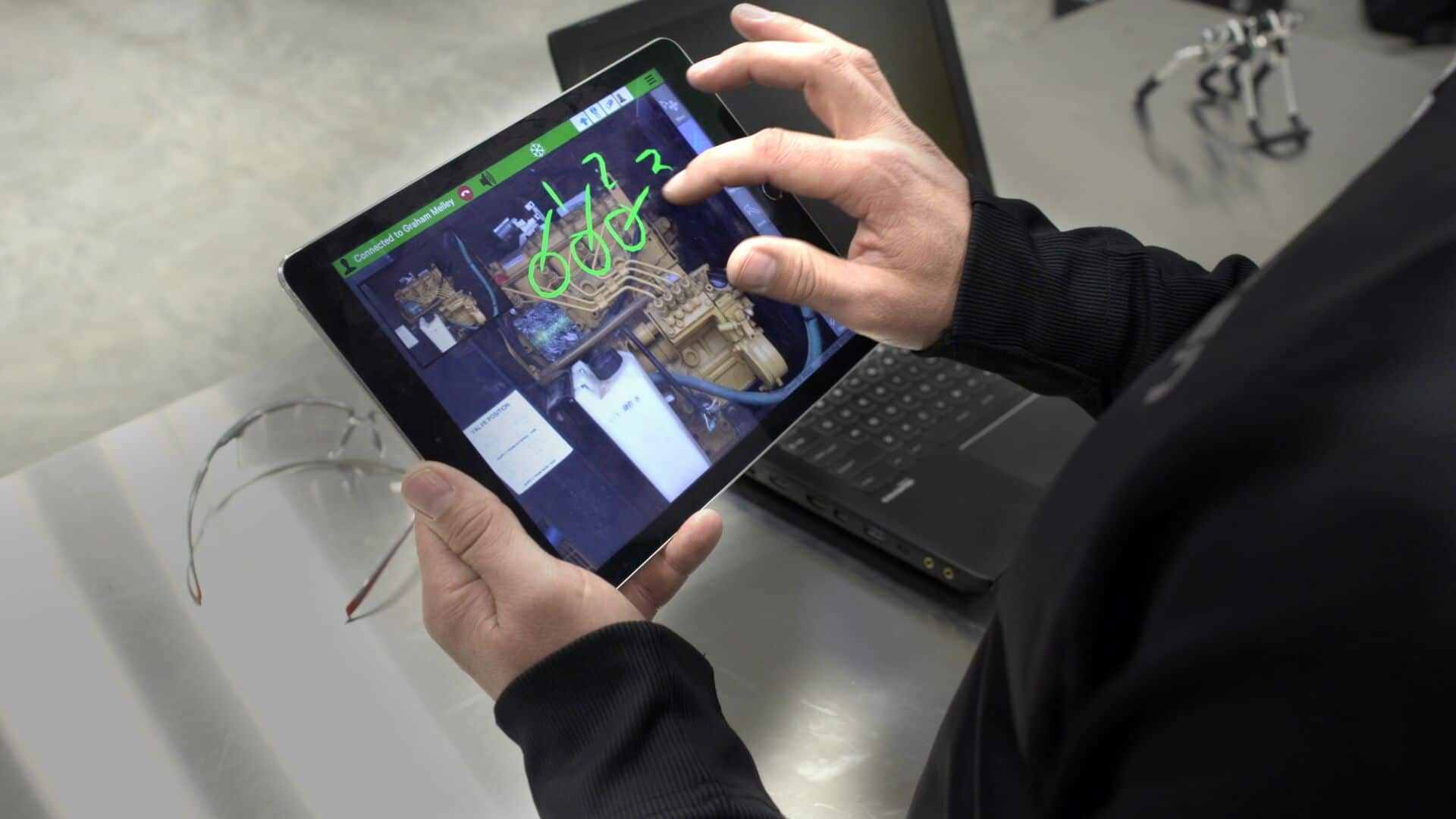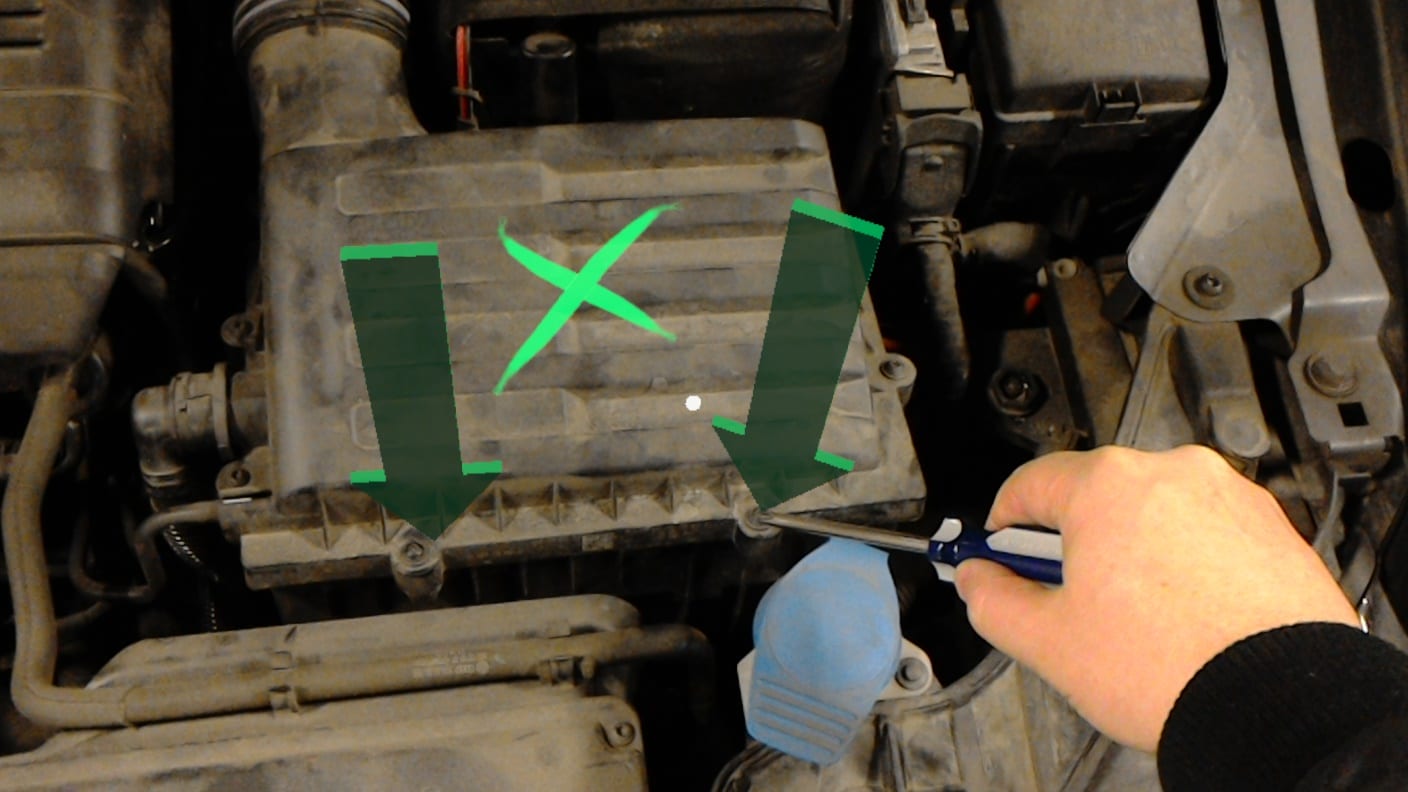
ARtillry Interviews is an ongoing series that features strategic takeaways from discussions with XR leaders. This week, we talk to Enterprise AR software innovator Scope AR. See the entire series here.
Enterprise AR continues to evolve, as discussed in a recent ARtillry Intelligence Briefing. Benefiting from and contributing to that evolution is Scope AR. Its software spans enterprise AR formats including remote assistance (Remote AR), and authored assistance (WorkLink).
Since our last interview back in July, Scope AR has hit a few key milestones. That includes Hololens integration, bringing its software to a more immersive and hands free form factor. That’s unlocked lots of functionality and use cases, CEO Scott Montgomerie tells ARtillry.
Beyond use cases, Hololens support has unlocked new verticals and has extended the company’s addressable market beyond those it previously targeted. This list will continue to grow as Scope AR announces more headset integrations (more announcements coming).
“We’re talking to industries we haven’t traditionally targeted,” said Montgomerie. “There’s lots of interest in healthcare [for] remote surgical guidance and triage. There’s also the hands free experience in construction when you have your gloves on and can’t use a phone very well.”
But Hololens isn’t a silver bullet, he admits. Its specs make it optimal for some environments but not others. This validates a multi-device market where hardware is varied and purpose-built. It also validates Scope AR’s approach as a device-agnostic software innovator.
“An elevator shaft with decent connectivity is a prime use case for Hololens,” said Montgomerie. “But if you’re out in the middle of the field and the process you’re working on is kind of long, the Hololens’ battery life and weight can make it a real barrier.”

Motivation To Adopt
Another important trend impacting enterprise AR is the shifting business model for maintenance and field service. Heavy equipment is increasingly sold in a “hardware as a service” model which, just like like Saas, can include a bundled service/maintenance component.
That essentially means that equipment maintenance is a cost center for providers, rather than the profit center it traditionally was. So that creates a lot more motivation to adopt technologies that engender effectiveness and cost-efficiency in their service calls.
“It used to be that because it was a profit center, it would be fine to have a ride along from a worker that was getting paid a lot,” said Montgomerie. “They’d sit beside a younger worker and train them for 3-6 months. That’s no longer economical for these companies.”
So this dynamic has boosted demand for AR remote assistance. Beyond less workers in the field, there’s also advantage in retaining top talent that may otherwise burn out from field work. As we’ve examined, older workers can be offered more cushy and flexible remote-expert gigs.
“You essentially turn someone from a blue collar worker into a knowledge worker,” said Montgomerie, “who can then confer that knowledge remotely to a field technician. You can’t get that through video: You really need the power of AR to facilitate that communication layer.”

Educating the Enterprise
But enterprise adoption isn’t without challenges. Montgomerie sees a lot of the same enterprise resistance we examined recently, and others. For example, reducing cost and project time can paradoxically deter some enterprise buyers, due to fears at the individual or departmental level.
“If they’re 30 percent more efficient, does that mean there’s going to be 30 percent reduction in workforce later on?” posed Montgomerie to characterize those fears. “Is that manager going to have to fire one of his friends, or get let go? It’s a real culture thing that we have to address.”
These realizations have strengthened Scope AR’s sales tactics. It now adjusts its messaging based on some of these fears and other enterprise points of resistance, such as workers’ overall reticence to being watched. That requires education and communicating a value exchange.
“Part of our sales strategy and on-boarding is actually addressing that,” said Montgomerie. “We say ‘yeah you’re going to be more efficient, but you’re also doing your job safer and better and we can educate you better. And there are a whole set of benefits to you as a worker.”

Road Map
It’s these types of sales, marketing and education developments that Montgomerie is setting as key goals for 2018. This is textbook maturity for tech companies that evolve product and market focus. Scope AR already had both, but it’s ramping up the business side.
“We’re being pretty aggressive,” he said. “We see the market maturing, we see product/market fit, and we’ve landed some pretty big deals. That’s an indicator that it’s time to reach the next level. We’re investing in a large sales force, marketing and retaining our thought leadership.”
Part of that development will also include unlocking more of its data to provide value to enterprise clients. This importantly involves data integrations with those customers’ systems — such as enterprise resource planning (ERP) — which can add new dimensions to AR.
“We collect a lot of data from our products, and right now we’re storing that in our own databases,” says Montgomerie. “Customers want that integrated with their data so it ties to things like work orders. So we’re working on the integration strategy with other data sources.
Lastly, ending where we began, hardware evolution will further position Scope AR to have greater functionality and value for enterprises. That includes new devices it will support, as well as upcoming versions of the devices it already supports. And Hololens tops the list.
“Hololens got all the broad strokes but is definitely more of a developer device,” said Montgomerie. “The good news is that’s it’s almost four-years old. They’ve had four years to work on it. I can’t wait to see what’s in the next device. I’m sure they’ve made lots of improvements.”
For a deeper dive on AR & VR insights, see ARtillry’s new intelligence subscription, and sign up for the free ARtillry Weekly newsletter.
Disclosure: ARtillry has no financial stake in the companies mentioned in this post, nor received payment for its production. Disclosure and ethics policy can be seen here.
Header image credit: Microsoft
